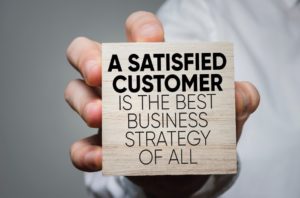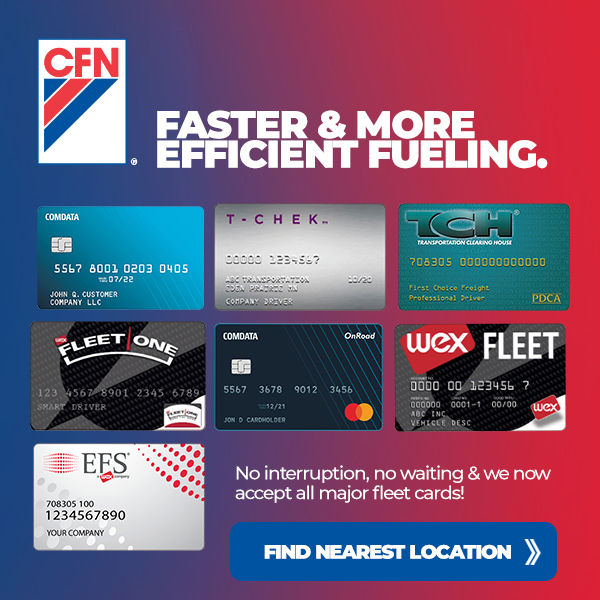
By Ed Pierce, Contributing Editor
Because of the depth and breadth of the fleet industry products and services, we have seen that there’s a good chance that a supplier may be acquired or merge with another supplier. At first, the potential disruptions are top of mind concerns. Pricing, service levels, billing and other systems, strategic partnerships are all critical in contributing to the smooth operation of the fleet.
Often overlooked after a merger or acquisition is the opportunity for a customer of an acquired or merged supplier to improve even a satisfactory relationship. Can the affected supplier formulate better processes, products, services, and pricing? Can the newly merged or acquired business apply additional resources to improve its capabilities and competitive edge?
Now Is the Time
If there was ever a time for the supplier affected by the change of ownership to focus on its customer base and market position, it is now. Smart management knows that a positive customer experience can calm the market waters and keep the sharks (competitors) at bay.
As a result, merged or acquired businesses should be more communicative with customers in sharing corporate strategy and priorities sooner than later. They should step up outreach to customers to ensure their messages are being heard and that customer concerns are being addressed. Finally, they should kick customer advisory groups into high gear to act upon customer ideas and feedback. Only action will satiate customer apprehension.
No Surprises
Like humans themselves, the collective fleet industry has a nervous system, that is, a network of sensory receptors that conduct impulses throughout the grid. Customers can suss out that change is coming when they are being asked for forecast information, when key contacts are unavailable, and decisions are delayed. Employees can signal nervousness. And, chatter has a viral spread.
There are signs that a company is conducting its due diligence to establish a forward strategy, including who are the important customers and those at risk. Sharing a realistic projection of anticipated business over the next year can help cement key customer accounts. As a customer, sharing your view of dependencies that define the supplier relationship along with forecasting growth can serve as a reminder to the supplier that goal achievement for both parties is interconnected.
Leadership Involvement
Once the transaction is complete, the supplier will make things official by enlisting key leaders to visit top customer contacts. While their goal may be to share a vision of the new organization, the customer’s goals should be to express any and all concerns about the impact of the change.
If those concerns had been previously expressed, the visit agenda should include an opportunity for the leaders to address them and use the visit as an opportunity to allay any fears of degraded service and support.
If your concerns had not previously been shared, provide that list to the company when arranging the meeting. Consider active interest on the part of the visiting executives to engage in conversation rather than just deliver news as a sign of true vendor interest in the customer relationship.
Your Concerns
Let’s run through some of scenarios that you might encounter:
- Depending on the merger, you might realize that you will not be such a big customer to the new company.
- You might learn that your favorite contact is not staying with the company.
- On the other hand, you might learn how important your business is to the merger, or how badly the new team wants to keep your business.
- You might also learn that the increased capabilities and processes address your needs even better than before.
According to André-Paul Pellet, now Director of Content and Knowledge Management at Dell EMC, all of this information is important when it comes time to apply pressure.
Applying Pressure
As apprehensive as a customer might be with an impending vendor acquisition or merger, the supplier’s staff will be much more concerned about the future. This state of confusion beneath the executive reassurance is normal, and according to Pellet, it is where customer leverage lies.
He notes, “As the customer, use the visit to clarify how this merger needs to meet your requirements. You should be looking for answers:
- Does the new entity have a vision for the next 30, 60, and 90 days?
- Do all pricing and terms remain in place (during integration)?
- Do they listen to you when you explain your needs?
- How will your current projects be managed during the transition?
- What will happen to your key contacts?
- Why did the merger occur—and what additional benefits will you receive from the new company?”
No Visit?
Instead of an executive visit, you may receive a letter, e-mail, or other communique from the supplier. There’s no reason to assume your company’s business isn’t important enough for a leadership visit but recognize that you will have to work a bit harder to grab the opportunity to get answers to your concerns. Start by reaching out to your point-of-contact.
Monitoring the Relationship
Of course, there is a period of transition after any merger or acquisition, and you will want to monitor key projects, deliverables, and expectations.
In conjunction with your point-of-contact, identify “must haves” and leave the “nice to haves” for later. Have your supplier contact write down and agree to work with you on those activities that are priorities in the next 60 days. Be sure that this list, along with a list of those who are critical to successful completion of the processes, is reviewed and acknowledged by the highest level executive you can contact.
This documentation will help the integration team as they determine who stays or goes, and how the work will continue. Input from proactive clients is appreciated and taken seriously received during integration.
Determining the Future
Early on, the amorphous nature of the merger or acquisition does not allow a company to determine whether or not the supplier is still right. Assuming key projects continue uninterrupted, it is best to take a wait-and-see approach, knowing that you still have leverage.
Given that the goal of the initial 90 days of transition was stability, the next step is to set the parameters for a successful future relationship. Again, according to Pellet, this is the time to spell out these items:
- Staffing roles or positions you feel are necessary to support your requirements
- Processes you want expanded to support your volume and requirements
- New services you would like applied to your account
- Identifying new key contacts from the merged company you should meet
- Expanded integration between your team and the supplier team (training for example)
- Expanded reporting methods (status reports, portals, etc.)
- Creation of a 12-month implementation plan
This is the time that a customer has maximum leverage. The new company has demonstrated they can deliver on your projects, and they clearly hope to grow your business as a basis of the merger. The supplier knows that input, suggestions, and plans can help it develop its plans and future direction. Ultimately, your requirements, your suggestions, and your priorities will help to “form the core DNA of the newly merged company.”





